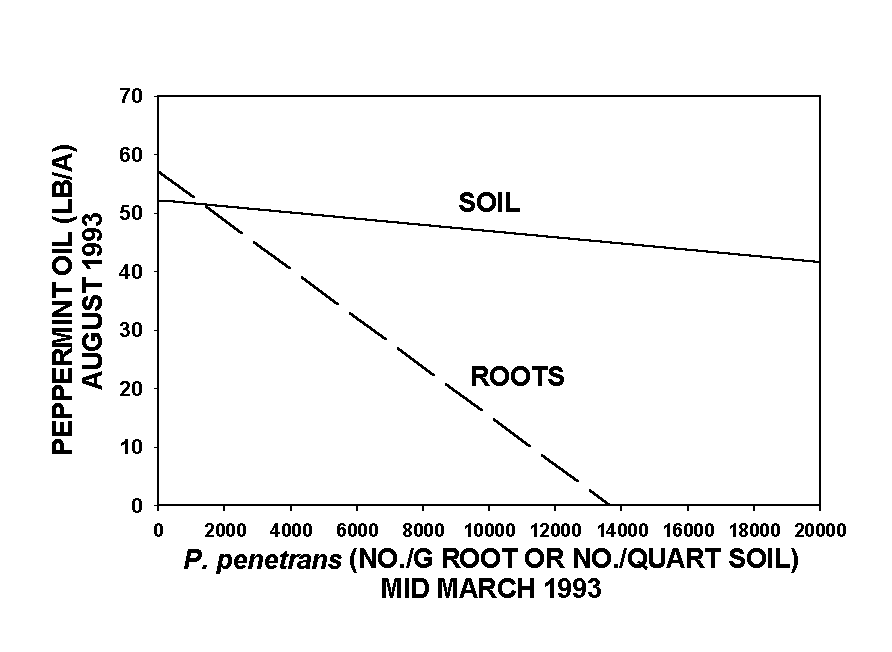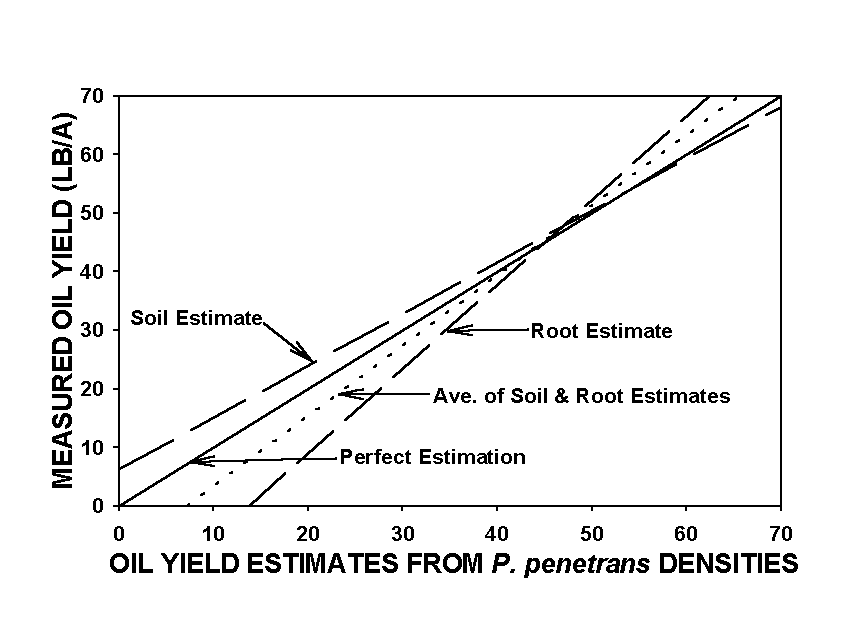|
DEVELOPMENT OF EILS |
|
CONTENTS [Return to Post-plant Options] |
One of the basic principles of pest management is the concept of economic
injury levels, defined as the level of pest density which causes economic loss equal to
the cost of controlling that pest. Economic gain will be achieved by treating densities
above this level but no gain, and probably economic loss, will be sustained if densities
below this level are treated. Knowledge of injury levels also assists the recommendation
and interpretation of results from pest sampling. While this concept appears straightforward in principle, it is difficult to establish in practice. Many factors independent of pest densities may effect yield including variety, other plant stresses, weather and grower management practices. Further complications occur with perennial crops where yield in one year may be influenced by condition of the crop in previous years. Thus, few economic injury levels have been established for pests in perennial crops and almost none are available for plant-pathogenic nematodes. Establishing treatment thresholds for peppermint is an exceptional challenge because yield is dependent on both hay production and the concentration of oil in that hay; factors which vary considerably, and perhaps independently, with reduction in nematode (or other pest) pressure. In addition, since price of oil varies greatly from year to year, a nematode density that may be an "economic" threshold in one year may not be an "economic" threshold in another year. The Nematology program at Oregon State University has worked for several years to further refine the understanding of the relationship between nematode densities and peppermint hay and oil yield to provide better guidelines for treatment of mint with nematicides. Early studies by Pinkerton (1983) determined that root populations of P. penetrans in August were highly correlated with the weight of hay that had just been harvested. Measurable yield loss on sandy loam soils was associated with populations above 170/g fresh root wt (1,450/g dry root wt) which was defined as the tolerance level. An economic threshold was set at 350/g fresh root wt as the nematode level, present at harvest, which was associated with yield loss equal to the cost of treatment with Vydate at 1 GPA. A 68% decrease in yield was estimated if nematode populations were ten times higher than the tolerance level. This can be expressed in a potentially more useful form by estimating that there would be a 6.8% decrease in yield with each additional increment of the tolerance level (170/g fresh root). Pinkerton (1983) could not establish a good relationship between yield and soil populations in August or between August populations and populations the following spring. Only one attempt was made to estimate yield from April populations and the relationship was very weak. The tolerance level was estimated at 74/g fresh root wt with a 3.8% decrease in yield with each additional increment of 74/g root. While August population estimates can be a good indication of potential stand vigor for the next season, they can not be used to determine if treatment is necessary before that damage occurs. Thus, threshold levels need to be established for populations present in spring before applications must be made. In order to obtain the data required to develop economic injury levels, it is necessary to have a large number of plots with a wide range in nematode densities which are then harvested to obtain a corresponding wide range in yields. These data can then be correlated in a mathematical function to generate density vs yield loss relationships. Data of this kind have been generated in Oregon from a number of nematicide trials conducted over several years. Treating with various formulations or rates of nematicides generates a gradient in nematode densities on the post treatment sample date which then can be related to the yield measured from those plots. Since most studies have been initiated in the spring, this gradient in nematode density has been established by sampling in mid-June. In 1993, densities of P. penetrans during mid-June were used to estimate the amount of yield loss attributable to those populations. Separate estimates were made for nematode populations in roots and soil since root-lesion nematodes occur in both habitats. In all these studies, five cores approximately 3 in diameter and 6 in deep were taken from each plot and combined into a sample. Soil was sieved, mixed, weighed and extracted and roots were washed, weighed and extracted. The unit of interest was determined to be the density of nematodes that would reduce yield by 1 lb oil/A. Treatment thresholds could be estimated by multiplying this increment by the number of pounds of oil it would take at the current price/pound to pay for treatment at current costs for product and application (ie. 3 lb at $12/lb would pay for a $36 treatment). General field condition also appeared to be an important variable. In a field which appeared more stressed due to Verticillium and other factors, 1 lb of oil was estimated to be lost for every increment in P. penetrans density of 45/g root or 290/quart soil present in mid-June. A less stressed field required densities of 165/g root or 570/quart soil to reduce yield by l lb oil/A (Ingham, 1994). Unfortunately, since nematode densities cycle through the year, using population estimates made in June are of limited usefulness when growers must determine if treatment is necessary in April (See sections on Sampling and Timing of Vydate Application). Therefore, additional effort was extended in 1993-1994 to develop a model to predict nematode injury levels based on populations from March samples. However, since few studies have sampled nematodes in March, a relationship between June populations and March populations had to be established. Plots (30) from nematicide studies in 1992 and 1993 and a population dynamics study in 1993 were sampled for nematodes on March 11, 1993 and left untreated for the remainder of the season. Each plot was resampled for nematodes on June 15, 1993 and the relationship between March and June densities was determined (See Figure 1). The following mathematical relationships were determined. For soil populations (number/quart soil): March Density = 2,199 + (0.738 x June Density), R = 0.67. For root populations (number/g fresh root): March Density = 1,154 + (0.527 x June Density), R = 0.89.
Figure 1. Relationship between mid-March and mid-June populations of root-lesion nematodes (Pratylenchus penetrans) in Willamette Valley peppermint fields during 1993.
Figure 2. Effect of root-lesion nematodes (Pratylenchus penetrans) on peppermint yield (lb oil/A) in the Willamette Valley during 1993. Calculated based on 85 plots from 4 sites. These functions were used to convert June P. penetrans populations to their estimated Marchpopulation densities for 55 additional plots within four nematicide trial sites in the Willamette Valley. The relationship between yield and March population densities was then determined for the 85 (30 measured, 55 calculated) plots together (see Figure 2 above). The relationships based on calculated March densities were very comparable to the more precise, but more limited, relationships derived from the 30 plots actually sampled in March (see Figure 3 below). The statistical confidence (R values) was slightly less, however (see below).
Figure 3. Effect of root-lesion nematodes (Pratylenchus penetrans) on peppermint yield (lb oil/A) in the Willamette Valley during 1993. Based on measured populations from 30 plots in 3 sites. To test the strength of the relationship between nematode density and yield, the equation derived from the 85 plot data set was used to predict the yield in the 30 plot data set (Figure 4 below). A good relationship was obtained by estimating yield from nematodes/quart soil, estimating yield from numbers/g root and then taking the average of these two estimates.
Figure 4. Relationship between measured oil yield (lb/A) and oil yield predicted from mid-March populations of root-lesion nematode (Pratylenchus penetrans). Estimates based on equations derived from one set of data were used to predict yield from another set of data. |




